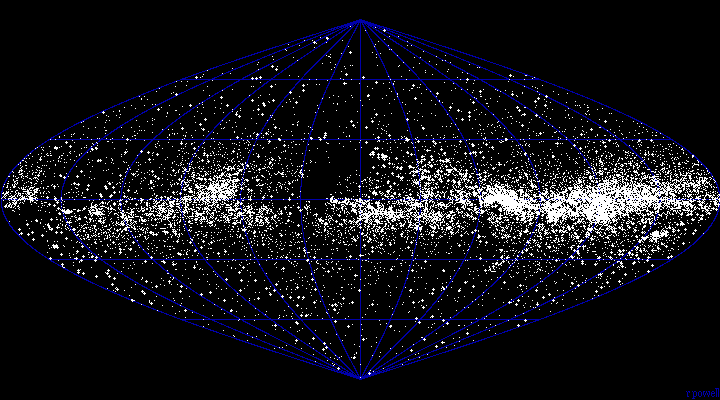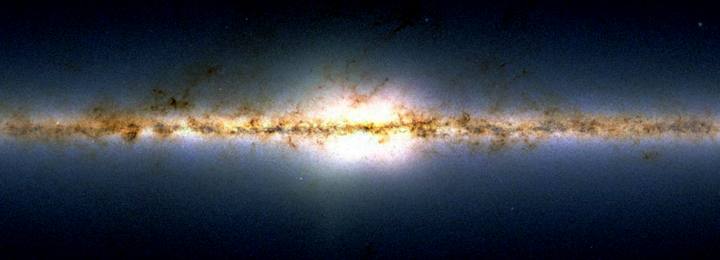The Universe within 50000 Light Years (original) (raw)
The Universe within 50000 Light Years
The Milky Way Galaxy
![]() Number of stars within 50 000 light years = 200 billion
Number of stars within 50 000 light years = 200 billion
About the Map
This map shows the full extent of the Milky Way galaxy - a spiral galaxy of at least two hundred billion stars. Our Sun is buried deep within the Orion Arm about 26 000 light years from the centre. Towards the centre of the Galaxy the stars are packed together much closer than they are where we live. Notice also the presence of small globular clusters of stars which lie well outside the plane of the Galaxy, and notice too the presence of a nearby dwarf galaxy - the Sagittarius dwarf - which is slowly being swallowed up by our own galaxy.
| Additional Maps | |
|---|---|
| A Map of the Milky Way Here is another map of the Milky Way viewed from above. This page also explains what scientific data there is for the spiral structure of our galaxy. | |
| A Galactic Sky Chart This is an all-sky plot of the 9000 brightest stars, plotted in galactic coordinates, and showing all of the constellations in the sky. |
| Data and Catalogs | |
|---|---|
| Globular Clusters Large galaxies are surrounded by a halo of tight spherical clusters of stars known as globular clusters. There are roughly 150 known globular clusters around our galaxy, and here is a list of them. |
The Sagittarius Dwarf Galaxy
This dwarf galaxy is the nearest galaxy to our own. However, it was only discovered as recently as 1994. It lies on the far side of the galaxy from us and is heavily obscured by the intervening gas, dust and stars. It is approximately 78000 light years away and about 10000 light years in diameter. It is orbiting our galaxy in a period of about 1 billion years but it cannot be expected to last much longer, in a few hundred million years it will be ripped apart by our own galaxy. It contains about one hundred million stars. It also lies in roughly the same position as the globular cluster M54 but whether this globular cluster is actually part of the dwarf galaxy is unclear.
Galactic Cannibalism
The Sagittarius Dwarf Galaxy will probably not be the first galaxy that has been 'eaten' by our galaxy. The Sloan Digital Sky Survey for instance report that outside of the Galaxy there are huge clumps of stars that appear to be the remains of smaller galaxies that were ripped apart by the Milky Way more than a billion years ago. The distribution of these stars shows at least two clumps that are several thousand light years in size and more than 100 000 light years from the center of the Galaxy.
The Galactic Plane

Above - An all-sky plot of the 25000 brightest, whitest stars (B-V<0) shows how these stars are concentrated along the Milky Way. This map shows our limited, inside view of the Galaxy. The large, dark patch near the middle of the picture is due to nearby dark nebulae in the constellations of Aquila and Ophiuchus.
Below - An infra-red view towards the centre of our Galaxy from theTwo-Micron All Sky Survey. Our view of the Milky Way is much better in infra-red light. Visible in this image are the huge clouds of dust which block our view of the Galaxy in visible light. The Sagittarius Dwarf galaxy is also very dimly visible in this picture extending downwards from the left side of the bulge.
